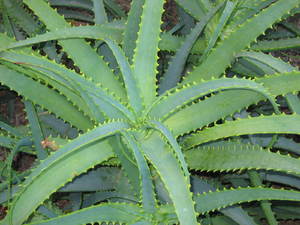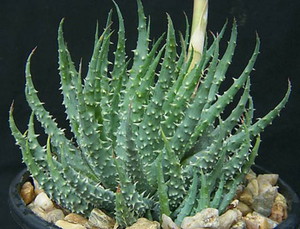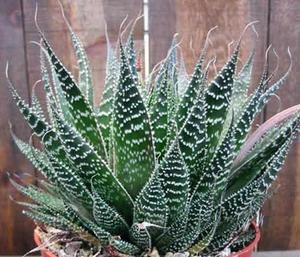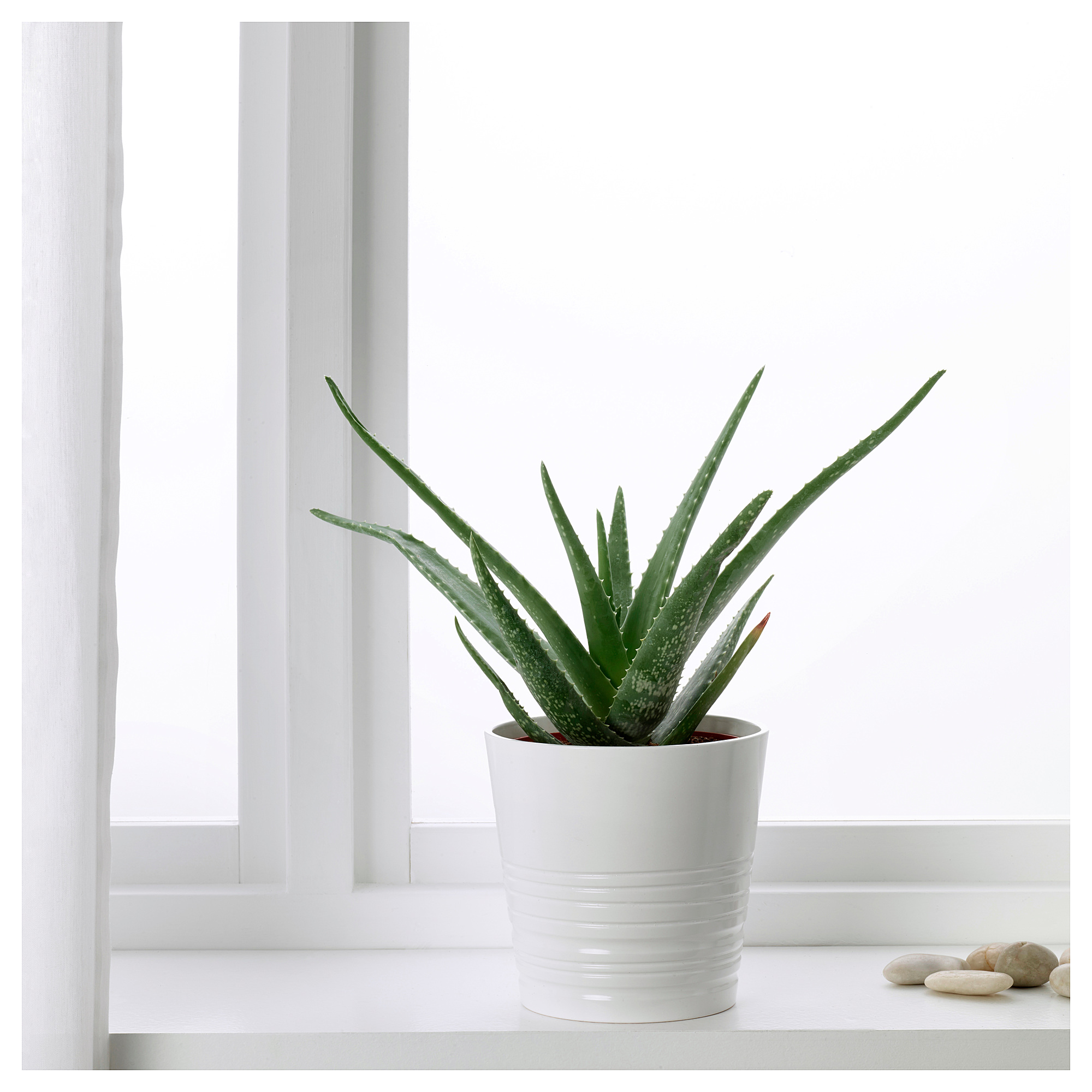More than 300 species of aloe live in natural conditions, but only a small part of them are grown at home. This plant from the genus of succulents is known not only for its decorative properties, but also for its medicinal properties. Some of the bred varieties look very original. Due to its healing properties, it is widely used in folk and official medicine, as well as in cosmetology. If the plant grows at home, the indoor air will become cleaner, since it contains phytoncides - substances that act as a disinfectant.
Content
Types for home conditions
Aloe grows on a windowsill at home, as a rule, no more than a meter. For decorative purposes choose dwarf plants and hybrids... Indoors, you can see the following varieties of this succulent:
- Aloe is tree-like; among the people, the agave has a powerful trunk and numerous side shoots. It grows about a meter in height.
- Common aloe reaches large sizes, forms rosettes. There are also names: aloe vera, Barbados, yellow.
- Variegated or tiger decorative aloe grows short, has a short stem, sometimes blooms.
- Awesome. This species received this name due to the numerous strong thorns located at the edges of the fleshy leaves.
- Soapy aloe blooms, its stem is short and thick, and its leaves are wide.
- Miniature varieties are called like this: multi-leaved, short-leaved, long-columnar, squat, spinous, pleasant.
How to care for aloe at home
The general rules for caring for this plant are the same, however, some varieties need a special approach, in particular, when the aloe needs to be propagated.
A place
 Temperature control and lighting plays a fundamental role in the cultivation of many varieties of aloe when choosing a location. The genus of succulents, and aloe are no exception, are very fond of bright lighting. Therefore, for growing this plant, the southern, southeastern or southwestern side of the location of the windows is better suited.
Temperature control and lighting plays a fundamental role in the cultivation of many varieties of aloe when choosing a location. The genus of succulents, and aloe are no exception, are very fond of bright lighting. Therefore, for growing this plant, the southern, southeastern or southwestern side of the location of the windows is better suited.
Aloe tolerates the winter period, when many light-loving plants lack light and require additional lighting, so there is no need to worry about it. In the summer, for hardening a flowerpot with a plant, it is better to put on a balcony or loggia, there the aloe will get stronger, but in extreme heat it is necessary to ensure that the hot rays do not fall on the leaves.
Care should be carried out taking into account the temperature regime. Summer should be within 22-26 degrees, and in winter the plant feels good at 10.
Soil and fertilizing
For aloe, the land is selected taking into account its fertility, looseness and air permeability. In stores today they sell ready-made substrate for succulents, but you can cook it yourself. To do this, you need to take leafy earth and sand, one part into two sod-clayey, then dilute it a little with charcoal and peat, expanded clay is laid out on the bottom. Aloe during the period of increased growth, namely from April to September, needs feeding. Leaving with fertilizers is carried out once or twice a month with a complex of mineral fertilizers.
How often to water and spray aloe?
 Watering depends on the time of the year; in the summer it is quite abundant. In winter limit to wetting the substrate, between waterings, the earthen lump should dry well. Use water only at room temperature.
Watering depends on the time of the year; in the summer it is quite abundant. In winter limit to wetting the substrate, between waterings, the earthen lump should dry well. Use water only at room temperature.
In summer, water should be done once a week or more, depending on weather conditions. Focus on the soil, it should dry out a little after the previous moistening. In winter, water once a month.
Remember! You need to water the plant adhering to the rule: it is better to have a lack of moisture than an excess.
It is harmful for aloe when water accumulates, it touches both the sump and the outlet. From this it follows that it is better to water the plant through the drainage hole. The pot should be immersed in water for 10 minutes, the succulent will take as much water as it needs.
The absence of accumulation of water in the outlet should be monitored during spraying. In winter, it is not produced, since aloe is practically insensitive to dry air, in the summer the plant is sprayed, but the sprayer is kept at a distance from the leaves. Spraying is carried out late in the evening, as a burn may appear on the leaves. Especially if the plant receives a lot of sun, as evidenced by its reddish tint.
Transplant and reproduction
Taking care of the plant at home, you should carry out the transplant procedure in the spring. The same time is favorable for reproduction. Young plants require an annual transplant, while an older plant costs 2-3 years apart. The root system of the plant develops very well and grows rapidly in volume, so the pot should be 20% larger each time. How is the transplant done?
- To transplant the plant, the plant should be removed from the previous pot, using a knife, which is drawn along the contour of the pot and separating the soil from it.
- The bottom of the larger container is filled with drainage,
- To it is added a nutritious, pre-prepared mixture,
- After that, the plant descends along with the earthen lump, and the free space near the walls is carefully covered with soil.
Plant propagation happens in several ways:
 If, during development, the succulent has two trunks, which happens in a tree-like variety, you should carefully divide the roots and plant each separately.
If, during development, the succulent has two trunks, which happens in a tree-like variety, you should carefully divide the roots and plant each separately.- The plant can be propagated by basal processes, they are carefully separated and placed in water to form roots, then planted in the soil.
- The daughter sockets are separated as soon as they begin to form.
- Aloe can be propagated by apical cuttings. They need to be cut and dried, turned to the ground only when the cut site becomes dry.
- Whole leaves are propagated in the same way, drying the cut line.
- Seeds are used much less often; they can be purchased at the store. Keep the pot under the lamp after sowing it in the ground.
Problems
If the succulent receives excess moisture, it is observed pallor and wilting of leaves, stem. Chopping and drawing is associated with a lack of sunlight. The leaves acquire a scarlet hue and become wrinkled, on the contrary, in the case of excess and heat.
When leaving at home, the plant may appear yellow around the edges, and the ends become dry. There may be several reasons: either from chlorinated water, from air saturated with tobacco smoke, lack of potassium.
The plant does not grow well in heavy clay soil, which prevents air from entering. This can be identified by a completely yellow plant. The same reaction occurs on overdrying of the substrate, as well as in dry or very humid air.
Diseases in aloe are as follows:
- The most common problem is root rot. This disease leads to root rot when there is excess moisture during watering. It also occurs if you water the aloe with too cold water. Plant growth stops or slows down, and the stem dries up.What measures to take? Aloe should be removed from the pot, a thorough inspection of the root system should be carried out, after removing the rotten parts, sprinkle with a mixture of coal powder, ash, and sulfur. After this procedure, the plant is transplanted into a substrate with an increased amount of sand. Important! The plant subjected to such execution is not watered for 3 weeks. In the case of complete decay of the roots, the plant should be propagated by cutting the top or leaves.
- Dry rot. This disease is very insidious. It develops within a short time and leads to drying out. It is not possible to save the plant, but in order to prevent it, it is treated with a systemic fungicide.
Plant pests are:
 The most noticeable is mealybug... It is removed with a brush or tweezers, the affected area should be rubbed with garlic tincture (70% alcohol). Then put in the shade for 2 days. For a more serious problem, insecticides are used.
The most noticeable is mealybug... It is removed with a brush or tweezers, the affected area should be rubbed with garlic tincture (70% alcohol). Then put in the shade for 2 days. For a more serious problem, insecticides are used.- The shield can be neutralized with a vinegar solution used to treat the plant. Insecticides are also used.
- Spider mite does not like cold water. In the summer, prevention and treatment are carried out by spraying with tobacco infusion, soapy water, garlic tincture. Acaricides are also effective.
- They fight thrips, using each time a new preparation of the insecticide group, since pests develop immunity. The plant should be sprayed and watered. A week after the successful destruction, the procedure is repeated in order to get rid of the larvae.
- Microscopic nematode worms infect the aloe root system. When infected, the affected areas should be removed, they look knobby.
Aloe can be called an unpretentious indoor plant, however, when caring for home, you need adhere to a number of rules... And also to respond in a timely manner to changes associated with a change in the appearance of the succulent and the cessation of growth during the growing season. Periodically carry out a thorough inspection of the plant so that in case of damage by a pest, start a fight with it in time.


